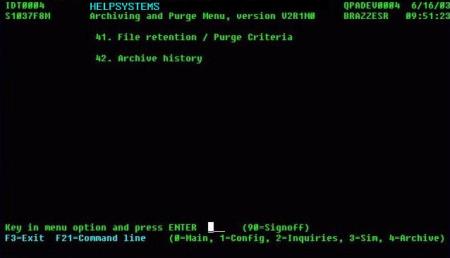Appendix G: Purge and archive overview
Over time, the amount of storage space taken up by the Database Monitor files will grow considerably. This can be managed by employing a reasonable strategy of archiving older data when it is no longer needed on a day-to-day basis. The Purge and Archiving system of Database Monitor provides a way to extract older information, remove it from the active files, and store it offline. This archived data may still be readily referred to simply by restoring it to an archive library and using the Archive History option in Database Monitor (42) to access it.
The way that data is archived in Database Monitor follows these principles:
- Each file in the system has a retention period, defined in days, months, or years.
- When a purge/archive is run, qualifying files have records which are older than the retention period removed and (optionally) moved to the archive.
- An archive corresponds to a library that contains the key Database Monitor transactional files.
- Once an archive is run, its resulting library may be saved to tape and removed from the system, freeing disk space.
- An archive may be restored at a later date (to the library having the archive name) and used for inquiry or reports.
Caution:
In order to restore an old Archive back into Database Monitor and read the ‘details’ of the archived file (before and after images) you must NOT remove the files from Option 11 (Database Monitor Configuration – Files).
You may remove the file and even the library from the system, but the file configuration must remain in Option 11 to be able to read the details from a restored Archive.
Recovery option:
If available, you may be able to restore the files from a backup, reconfigure them back into Option 11, and then remove the file and library after it is configured back into Option 11.
For more details on the archive and purge process, refer to the sections that follow. Below is the menu screen for the two purge and archive functions in Database Monitor.
